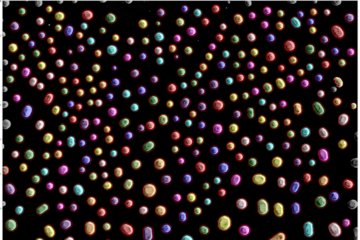All genres
121.
Journal Article
Strain hardening by dynamic slip band refinement in a high-Mn lightweight steel. Acta Materialia 116, pp. 188 - 199 (2016)
122.
Journal Article
Spectral TRIP enables ductile 1.1 GPa martensite. Acta Materialia 111, pp. 262 - 272 (2016)
123.
Journal Article
Multi-scale and spatially resolved hydrogen mapping in a Ni–Nb model alloy reveals the role of the δ phase in hydrogen embrittlement of alloy 718. Acta Materialia 109, pp. 69 - 81 (2016)
124.
Journal Article
Effect of intercritical deformation on microstructure and mechanical properties of a low-silicon aluminum-added hot-rolled directly quenched and partitioned steel. Materials Science and Engineering A: Structural Materials Properties Microstructure and Processing 656, pp. 200 - 215 (2016)
125.
Journal Article
Atomic scale investigation of non-equilibrium segregation of boron in a quenched Mo-free martensitic steel. Ultramicroscopy 159, pp. 240 - 247 (2015)
126.
Journal Article
Dynamic strain-induced transformation: An atomic scale investigation. Scripta Materialia 109, pp. 23 - 27 (2015)
127.
Journal Article
Linear complexions: Confined chemical and structural states at dislocations. Science 349 (6252), pp. 1080 - 1083 (2015)
128.
Journal Article
Enhancing Hydrogen Embrittlement Resistance of Lath Martensite by Introducing Nano-Films of Interlath Austenite. Metallurgical and Materials Transactions a-Physical Metallurgy and Materials Science 46 (9), pp. 3797 - 3802 (2015)
129.
Journal Article
3D structural and atomic-scale analysis of lath martensite: Effect of the transformation sequence. Acta Materialia 95, pp. 366 - 377 (2015)
130.
Journal Article
An Overview of Dual-Phase Steels: Advances in Microstructure-Oriented Processing and Micromechanically Guided Design. Annual Review of Materials Research 45, pp. 391 - 431 (2015)
131.
Journal Article
Grain boundary segregation engineering and austenite reversion turn embrittlement into toughness: Example of a 9 wt.% medium Mn steel. Acta Materialia 86, pp. 182 - 192 (2015)
132.
Journal Article
Nanolaminate transformation-induced plasticity-twinning-induced plasticity steel with dynamic strain partitioning and enhanced damage resistance. Acta Materialia 85, pp. 216 - 228 (2015)
133.
Journal Article
Mechanisms of subgrain coarsening and its effect on the mechanical properties of carbon-supersaturated nanocrystalline hypereutectoid steel. Acta Materialia 84, pp. 110 - 123 (2015)
134.
Journal Article
Segregation of boron at prior austenite grain boundaries in a quenched martensitic steel studied by atom probe tomography. Scripta Materialia 96, pp. 13 - 16 (2015)
135.
Journal Article
New insights into the austenitization process of low-alloyed hypereutectoid steels: Nucleation analysis of strain-induced austenite formation. Acta Materialia 80, pp. 296 - 308 (2014)
136.
Journal Article
Smaller is less stable: Size effects on twinning vs. transformation of reverted austenite in TRIP-maraging steels. Acta Materialia 79, pp. 268 - 281 (2014)
137.
Journal Article
Designing Heusler nanoprecipitates by elastic misfit stabilization in Fe–Mn maraging steels. Acta Materialia 76, pp. 94 - 105 (2014)
138.
Journal Article
Designing quadplex (four-phase) microstructures in an ultrahigh carbon steel. Materials Science and Engineering A: Structural Materials Properties Microstructure and Processing 612, pp. 46 - 53 (2014)
139.
Journal Article
Grain boundary segregation engineering in metallic alloys: A pathway to the design of interfaces. Current Opinion in Solid State and Materials Science 18 (4), pp. 253 - 261 (2014)
140.
Journal Article
Superplastic Mn–Si–Cr–C duplex and triplex steels: Interaction of microstructure and void formation. Materials Science and Engineering A: Structural Materials Properties Microstructure and Processing 610, pp. 355 - 369 (2014)










